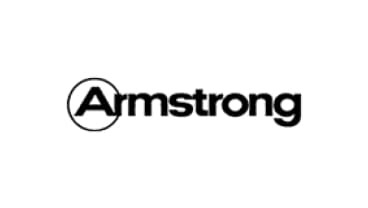
Sean Fitzgerald, PG, is a research geologist specializing in asbestos environmental studies.
Armstrong World Industries manufactured asbestos products from the 1930s to the 1970s. Asbestos litigation caused the company to file for bankruptcy in 2000. An asbestos trust fund became active in 2007 and it contains more than $2 million to compensate victims.

Armstrong made adhesives, backing and floor tiles with asbestos. It also added asbestos to gaskets, corkboard and fiberboard. This put workers at risk of mesothelioma and other asbestos-related diseases.
Asbestos was a cheap and effective option for the company’s insulation needs. Over the course of 40 years, Armstrong’s asbestos products were used in homes, businesses and factories.
Armstrong’s Asbestos Products
Flooring and roofing installers were exposed to asbestos in Armstrong’s asbestos tiles, adhesives, mastics, backing, felt and paper. Armstrong also made asbestos spray insulation, which is one of the most dangerous forms of exposure. Armaspray contained at least 85% asbestos fibers.
Though it may be an effective insulator, asbestos is a toxic mineral. Asbestos exposure is the leading cause of mesothelioma. When inhaled, asbestos fibers cause inflammation. This may lead to cancer and other diseases.
Workers at Armstrong’s factories and those installing their asbestos products faced exposure risks. The risk for people who worked with asbestos directly is higher than for consumers.
Spending more time around asbestos increases the likelihood of getting sick. However, there is no safe level of asbestos exposure.
Occupations Exposed to Armstrong Asbestos Products
Anyone who worked with Armstrong’s asbestos products may have accidentally brought the fibers home on clothing. This can lead to secondary asbestos exposure in family members. Secondary exposure is also known to cause asbestos-related diseases.
Armstrong World Industries faced thousands of mesothelioma lawsuits from the 1970s until it went bankrupt in 2000. In the 3 years before filing for bankruptcy, Armstrong paid more than $500 million in asbestos settlements. This included defense costs.
The courts have consistently ruled Armstrong knew the dangers of asbestos. It failed to inform employees and consumers, thereby endangering them. Among the thousands of asbestos cases the courts have processed since the ‘70s, a few stand out as landmarks that defined later cases.
Landmark Armstrong Asbestos Litigation
Armstrong had about 173,000 asbestos lawsuits pending when it filed for bankruptcy. These include personal injury lawsuits and wrongful death claims. These product liability suits often claim negligent exposure and a failure to warn about the risks of asbestos.

Gain access to trust funds, grants and other forms of compensation for you or your loved ones.
Get Help NowArmstrong declared bankruptcy in 2000. Asbestos litigation had drained its financial resources. After it reorganized 6 years later, it funded the Armstrong World Industries Asbestos Trust with more than $2 billion. Since it opened in 2007, the trust has received nearly 800,000 claims and paid more than $3 billion in damages.
This trust initially established a payout of $110,000 for each mesothelioma claim. As of March 2025, mesothelioma claimants will get $11,880 based on a percentage of 10.8%. Though this means less payout per person, it ensures there will be enough money to pay all asbestos trust fund claims.
Claimants need to show they were exposed to specific asbestos products. These include both Armstrong’s asbestos products and Nicolet’s, which used to be Keasbey & Mattison. The trust also has an approved job site list. You may be eligible to file an asbestos trust fund claim if you worked at one of these job sites.
Seeking legal help with filing your Armstrong asbestos trust fund claim can ensure it’s filed properly and on time. There is a statute of limitations on filing, which is a rule that says you only have a certain amount of time to file your trust fund claim. A knowledgeable asbestos lawyer will have experience with the process.
Our Patient Advocates can answer your questions about asbestos trust funds. They can also help you find the right lawyer for you and your family. They’ll handle your Armstrong trust claim so you can focus on your mesothelioma treatment and spending time with your family.
Recommended ReadingStay up-to-date on treatment, research, clinical trials, doctors and survivors
The information on this website is proprietary and protected. It is not a substitute for professional medical advice, diagnosis or treatment. Any unauthorized or illegal use, copying or dissemination will be prosecuted. Please read our privacy policy and terms of service for more information about our website.
This website and its content may be deemed attorney advertising. Prior results do not predict a similar outcome.
The Mesothelioma Center’s claim as the most trusted resource is based on our more than 150 5-star Google and BBB reviews. Our organization also helps more than half of all mesothelioma patients annually diagnosed.
Your web browser is no longer supported by Microsoft. Update your browser for more security, speed and compatibility.
If you are looking for mesothelioma support, please contact our Patient Advocates at (855) 404-4592
The Mesothelioma Center at Asbestos.com has provided patients and their loved ones the most updated and reliable information on mesothelioma and asbestos exposure since 2006.
Our team of Patient Advocates includes a medical doctor, a registered nurse, health services administrators, veterans, VA-accredited Claims Agents, an oncology patient navigator and hospice care expert. Their combined expertise means we help any mesothelioma patient or loved one through every step of their cancer journey.
More than 30 contributors, including mesothelioma doctors, survivors, health care professionals and other experts, have peer-reviewed our website and written unique research-driven articles to ensure you get the highest-quality medical and health information.
My family has only the highest compliment for the assistance and support that we received from The Mesothelioma Center. This is a staff of compassionate and knowledgeable individuals who respect what your family is experiencing and who go the extra mile to make an unfortunate diagnosis less stressful. Information and assistance were provided by The Mesothelioma Center at no cost to our family.LashawnMesothelioma patient’s daughter


Asbestos.com. (2025, November 24). Armstrong World Industries. Retrieved December 18, 2025, from https://www.asbestos.com/companies/armstrong-world-industries/
"Armstrong World Industries." Asbestos.com, 24 Nov 2025, https://www.asbestos.com/companies/armstrong-world-industries/.
Asbestos.com. "Armstrong World Industries." Last modified November 24, 2025. https://www.asbestos.com/companies/armstrong-world-industries/.
An occupational scientist or another expert who specializes in occupational hazards reviewed the content on this page to ensure it meets current scientific standards and accuracy.

Sean Fitzgerald, PG, is a research geologist specializing in asbestos environmental studies.
Our fact-checking process begins with a thorough review of all sources to ensure they are high quality. Then we cross-check the facts with original medical or scientific reports published by those sources, or we validate the facts with reputable news organizations, medical and scientific experts and other health experts. Each page includes all sources for full transparency.
Please read our editorial guidelines to learn more about our content creation and review process.
